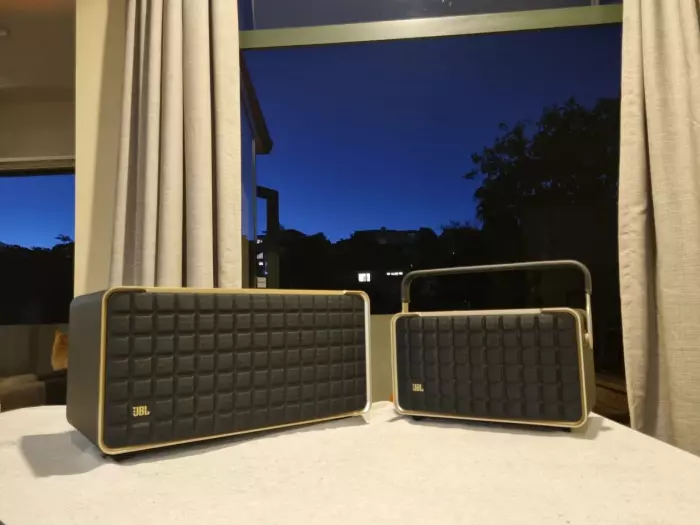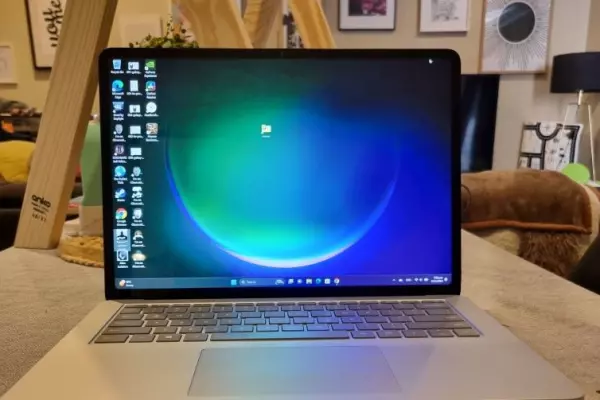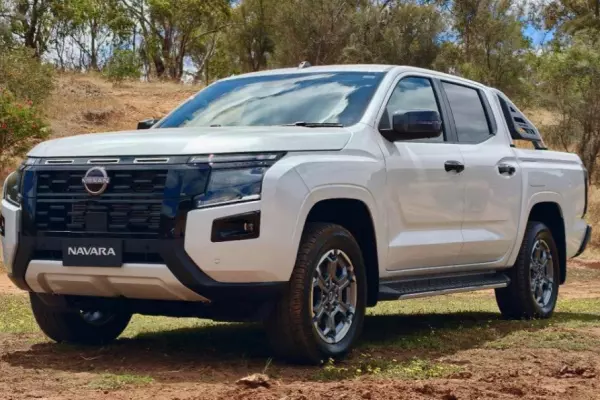The JBL brand has brought sound to our ears for more than 75 years. It's a name synonymous with speakers, headphones and musical production equipment.
Named after its founder, James Bullough Lansing, the Los Angeles-based company has been a major influence in the development of audio equipment since it was established in 1946. It has a surprisingly interesting history (worth a google if you’re interested), including providing the speakers that made Woodstock '69 such a triumph.
This brief history lesson is relevant because JBL's latest offering, the aptly named Authentics range of speakers, is a nod to the company's past while also being a huge leap forward in terms of the future of sound.
Visually appealing
The design of the speakers has a very vintage feel, bringing back the popular Quadrex grille pattern originally found on JBL's L100 home speakers from 1970. This aesthetic is a welcome one, as the speakers, quite frankly, look damn cool.
The combination of the old and the new makes these visually appealing and gives them a timeless feel. The softer flowing edges, illuminated volume indicators and recycled leather finish reflect an overall retro approach that means these speakers will fit into most living rooms as much as they would look at home in a garage for band practice.
Paying for good sound
The Authentics range offers three speakers, the 200, 300 and 500, priced at $499.95, $699.95 and $999.95, respectively. They're certainly not the cheapest speakers on the market, but good sound doesn’t come cheap, and these sound every bit as good as they look.
The two units I had for review were the rechargeable 300 – which was reasonably portable, thanks to it’s easy-to-carry handle – and the 500, which had to be plugged in to operate, but was the lighter of the two despite being the bigger, presumably because it didn't have a battery like the 300 had.
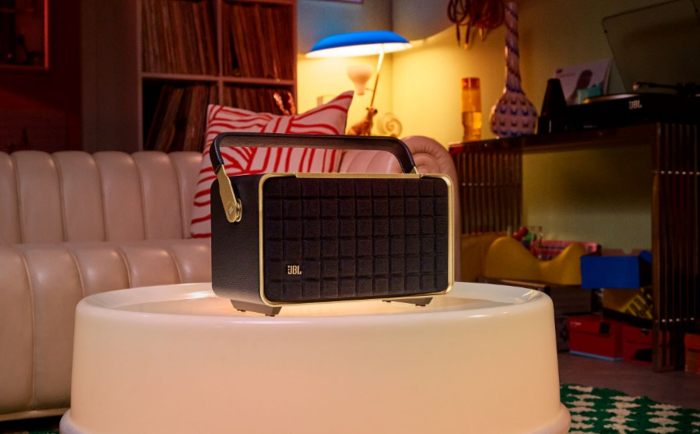
The handle on the rechargeable Authentics 300 makes it easy to carry around. (Image: Supplied)
Both sound great and pack a real punch volume-wise, especially given their sizes. The 300 was particularly surprising in terms of its output relative to its size, with 100w of total speaker output.
This is by no means to suggest that the 500 isn’t a volume powerhouse; in fact, at 270w, it has almost three times the output power. So, in reality, it actually has the better size-to-output ratio, but both are impressive.
In terms of drivers, the Authentics 300 offers 2 x 2.5mm tweeters and a 5.25-inch woofer, which makes a UE boom seem like a set of headphones.
Audio clarity
It’s a level of volume and audio clarity I have never encountered in a portable speaker before. Keep in mind this isn’t portable enough to put in your pocket, but it does have a handle that folds away, making it about as convenient as a chilly-bin and just as easy to take around.
The 500 goes bigger and better, providing 3 x 25mm AI dome tweeters, 3 x 2.75-inch midrange and an impressive 6.5-inch subwoofer, meaning the sound is loud, proud and incredibly clear.
This also comes equipped with Dolby Atmos, another feature on the 500 that further explains the price leap between this and the 300.
Musical ensemble
Both speakers handle bass well, even at full volume, and not in a way that drowns out the other elements of the music.
The ability to enhance each instrument so it stood out on its own but still remained part of the overall musical ensemble particularly impressed me.
Listening to Radiohead's Paranoid Android – a song layered with bass, drums, multiple guitars and vocal harmonies – I was really surprised at how every instrument was so perfectly balanced, even on the standard settings of both speakers.
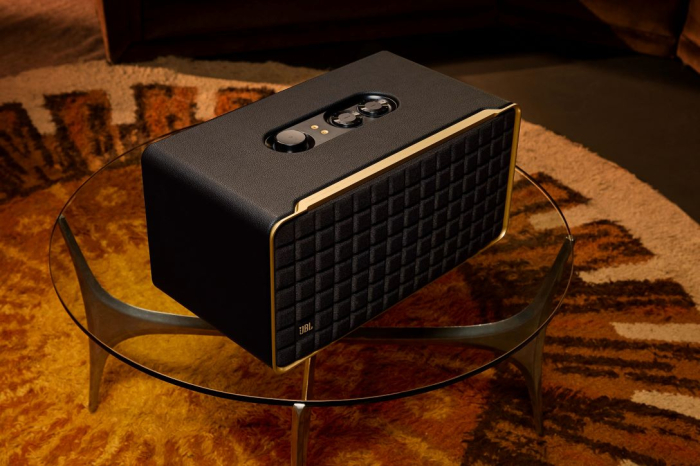
Funk and soul: The sound from the 500 is loud, proud and incredibly clear. (Image: Supplied)
What was even more impressive was that lowering the volume significantly didn’t take away from this individualised unity of sound of each instrument that the speakers were able to produce.
My 20-month-old daughter was stoked at how clearly she could hear all the harmonies in the song Hot Potato by The Wiggles, which she repeatedly demanded while I was testing the devices.
The default sound settings on each speaker were perfectly balanced on every song and genre I tried, but anyone who might wish to tweak with the basics can adjust the bass and treble levels easily with the plastic knobs on top of the speaker itself.
The accompanying app, JBL One, allows for some slightly more advanced sound customisation via a digital equaliser, although it isn’t as thorough as more-experienced listeners might like. This is, however, a really easy-to-use system, so newbies can feel like audio engineers with the slide of a finger.
Both these speakers provide wifi connectivity. This is a cool feature that enables direct streaming and connecting to things like Alexa, Google Home, Spotify and Tidal. Being able to sit back and say, “Hey, Google”, to your vintage-looking speaker and changing the song or artist without having to touch your phone certainly adds to the overall experience that the JBL Authentics range offers.
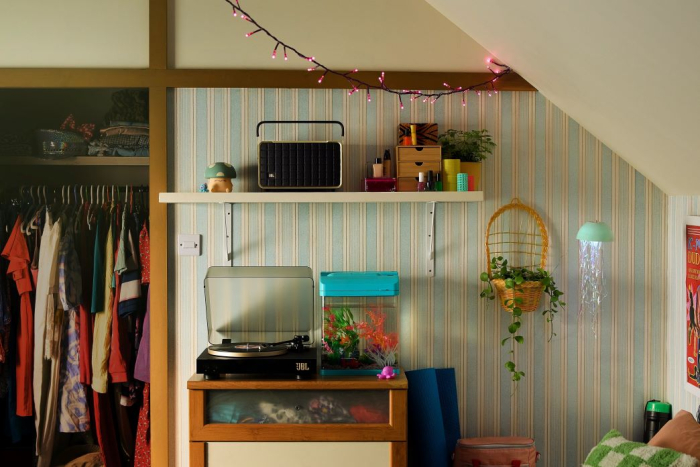
Being able to have speakers operating in sync in different rooms is a useful feature. (Image: Supplied)
You can also connect multiple speakers from the range together, either in the same room or in separate rooms of the house.
I did this through setting up a multi-speaker arrangement via the Google Home app, and although this was a little bit fiddly and at first kept switching between speakers instead of playing through both simultaneously, I soon had it cranking in both my garage and my living room at different volumes as I got more familiar with the settings.
This option would helpful for someone planning to entertain guests in multiple rooms at the same time.
Overall, the speakers in JBL's Authentics range are excellent – aesthetically pleasing and beautifully designed, with a range of laudable features.
The sound quality is hard to fault in terms of both volume and clarity, and although I found the app a little limited when customising the sound and the plastic knobs on top not as high end as the rest of the design, these speakers are a really decent offering from JBL.


